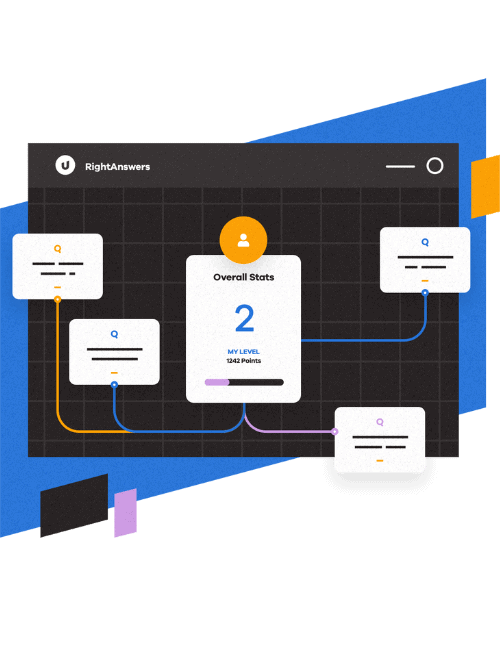Top 3 Must-Have Contact Center Software Solutions of 2024
In the last few decades, contact centers have seen an evolution. With new technologies like artificial intelligence (AI) changing the way people interact with each other and companies, it’s clear to see why contact centers would follow suit. Organizations have taken notice and incorporated new communication channels into their contact centers’ everyday use. As a result, new solutions have been necessary to help support those added touchpoints.
Enter contact center software possibilities. As organizations adapt their customer service with these new solutions, we thought it would be a good idea to go over what we see as the ones that provide the most value.
Here are our top 3 contact center solutions:
1. Knowledge Management
2. CTI
3. Customer Engagement Software
If you’d like to learn more about the challenges these contact center solutions solve, keep reading.
1. Knowledge Management
Every day, there’s an enormous amount of information going in and out of organizations. But if it’s not managed well, that information can lead to a number of issues including poor communication or training among employees, lack of customer insights as well as lax security and compliance.
To help with this, there are a variety of knowledge management solutions built specifically for contact centers. Any time an organization collates incoming or already existing data to enhance the understanding of an area, and makes it easily accessible to agents, that is considered knowledge management. For contact centers, knowledge includes policies, products, systems, processes, and procedures within systems and databases. However, the knowledge management system can include anything related to operations, employee skills, customers, transactions, and anything else relevant to the business.
Knowledge management helps alleviate the strains too much information can cause for contact centers. Not all incoming information was created equal. With a solid knowledge management solution in place, agents can have a federated search to pinpoint what they need when they need it during real-time customer calls. This capability allows agents to be able to search through well-maintained and categorized information to provide better insights for agents providing customer service. It also reduces high call volumes and wait times which ultimately helps to boost agent retention by avoiding burnout.

2. CTI
Telephones have been around for nearly 150 years. For most of that time, making phone calls has been the main communication method for doing business across industries. However, when computers became more mainstream for organizations in the 1980s, organizations began to see increased efficiencies and productivity. While computers have obviously enabled the business world to move at a much faster and more streamlined pace, phone calls are still a necessity for most customer service jobs. This is where Computer Telephony Integration (CTI) comes into play.
Computer telephony integration (CTI) enables an organization to combine its telephony system with an employee’s desktop or preferred CRM. This connection allows customer calls to go straight to an agent’s computer. CTI software allows handling of all communications from various platforms including email, social media, chats, messaging, self-service options, and screen sharing. So, it makes the process of connecting with other business systems much more efficient.
With its ability to connect agents with other live contact methods, they’re able to handle multiple communication channels through their computer. CTIs also automate and improve the day-to-day business processes, prevent constant switching from one app to another, and provide quick access to data and functionalities which improve agent retention and overall work experience.
3. Customer Engagement Software
Everyday customers and companies from around the world interact with each other across all industries. With all of those back-and-forth communications (and sometimes one-sided from organizations themselves), it’s understandable how some customers could tune out most of that outreach. However, organizations need a way to better engage with their target customers to provide a better overall experience and maintain loyalty to the brand itself. And this is where customer engagement software can make an impact.
By utilizing this type of solution, organizations can grasp a better understanding of their customers. This is done through capturing their feedback across the customer journey and analyzing it so that customer experience (CX) professionals can act in real time. This tool enables contact center agents to get up-to-speed with their everyday work and make better choices. With more informed decisions every step of the way, organizations can provide a high-quality customer service exchange in an efficient, productive, and cost-effective manner.

What Are The Benefits of These Contact Center Solutions?
Contact centers today cannot operate in a vacuum. To be successful, they need the right solutions to streamline their large workloads, provide quality customer service, and access the right knowledge when it’s needed most. Now that we’ve shared our top three contact center solutions and the challenges they help with, it’s time to peek into their benefits.
Benefits of Knowledge Management
The name alone makes knowledge management seem straightforward—it’s a way to assess, categorize, and access your organization’s information. But it does so much more, especially when it comes to contact centers.
Knowledge management software is arguably one of the most useful tools in your contact center agent’s arsenal. By having access to the most relevant knowledge about your organization and its customers, contact center agents are able to fast-track their onboarding and learning paths with anywhere on-the-job support. This convenient access to quality organizational knowledge also helps lighten agents’ cognitive workload. Instead of having to remember all the different policies, guidelines, and customer specific information, agents have direct access to all of that and more via AI-enabled search.
Knowledge management solutions also enable higher customer satisfaction because agents are able to utilize federated searches to increase first call resolution numbers. This means agents have so much useful information that they’re able to solve an issue in that first interaction without having multiple touchpoints with the customer. Ultimately, knowledge management solutions help to increase workplace efficiency for the contact center itself.
Benefits of CTI
As we mentioned above, computers have only been widely used for business since the 1980s. Finding a way to increase workplace efficiencies by connecting computers with telephone systems also began in the same decade but through a hardware solution. However, today many contact centers now rely on a cloud-based computer telephony integration (CTI) solution.
With this connection, contact center agents have customer calls with better context because information is pulled through the CRM and pops on the screen before speaking with a customer. The CTI connection gives agents a quick way to accurately click-to-dial directly from any CRM record and configure speed of dialing. Instead of spending time manually writing down each interaction, agents can now have an automated recording of inbound and outbound calls logged directly into their CRM. CTI also enables a one-click transfer for quickly rerouting calls to the right expert.
Basically, CTI solutions allow contact centers to scale at a quicker rate because of the efficiencies and productivities they help push forward. Without having to overhaul computer infrastructures, organizations are able to add instant value to their existing tech stack and bottom line.
Benefits of Customer Engagement Software
Customers are bombarded with so much information every day. Organizations looking to get through all the noise may feel like it’s an impossible uphill battle (and at times, it is). So, it’s not enough to merely have information about customers interacting with your organization. To take it to the next level, it’s important to have a better relationship with them and that’s where customer engagement software comes into play.
People want to have meaningful interactions with the companies they encounter, especially if they’ve spent money for a product or service. Customer engagement software allows just that. Upon collecting information throughout the customer journey, whether it’s through email, SMS, app, chat, web, or another avenue, agents can pull insights from those interactions for a more productive customer conversation. Over time, this helps to build that effective relationship.
Simply put, customer engagement software puts agents in the driver seat to be able to put the customer first and intelligently listen to their needs. With the information they gather across each and every communication channel, agents are better able to view trends and make correlations for more informed decisions. They’re able to take a more tailored approach to customer service for your organization by viewing data analysis, visualizations, and taxonomies for any customer. It also gives agents a way to have real-time customer resolutions.
How to Select the Best Contact Center Solution
When it comes to choosing a solution for your contact center, there are several moving pieces to factor in. From the information flowing in and out of it every day with agent to customer interactions and the inner workings of everyday operations at the organization itself, there are a variety of contact center solutions to think about. However, for the top three we’ve outlined—knowledge management, CTI, and customer engagement software—, here are the steps we recommend following:
- Conduct an audit of existing solutions
- Categorize existing solutions into what works and what doesn’t work well
- Build out your organization’s contact center goals
- Determine any operational holes that new solutions could benefit
- Research all options based on your organization’s intended goals
- Compare each vendor’s different software features
- Pressure test those options in an employee focus group
Ideally your contact center solutions should uplift and enhance both agent and customer experiences. Your contact center solutions are arguably the core of your organization’s everyday operations. Because of that, whichever solution is chosen has to be carefully evaluated and selected with great importance. By going through each of the above outlined steps, your organization can ensure it’s choosing what’s best for its everyday contact center operations.